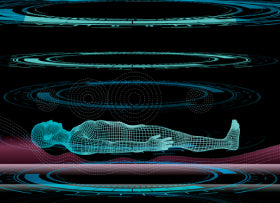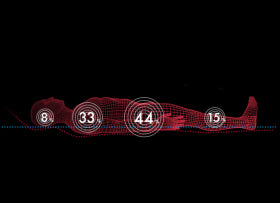How Daylight Saving Time Transformed Society and the Way People Sleep
Getting the right amount of sleep is crucial for physical and mental health. It boosts immunity, stabilizes mood, reduces stress, and promotes the production of happy hormones. This makes people feel refreshed and have enough energy to tackle challenges throughout the day.
But what if there are days when you don't feel well-rested? Getting enough rest isn't always about how many hours you take to sleep. It might be caused by your natural sleep cycle being disrupted, which can happen because of Daylight Saving Time (DST) adjustments. Many Americans encounter sleeping problems during the DST period when clocks are adjusted an hour earlier to maximize daylight hours and save energy.
And while factors such as your lifestyle, diet, and having a high-quality mattress can influence how refreshed you feel, sleeping patterns also have a direct impact on sleep quality. The changes brought by earlier DST adjustments might appear minor at first, but they can significantly affect your regular sleeping patterns.
Understanding DST
The idea of DST began several centuries ago. In ancient civilizations, schedules were adjusted based on the sun. If people were to wake up earlier and maximize the sunlight, they would not spend too much on burning candlelight or consuming electricity.
While Benjamin Franklin is often credited, the modern version of DST began with George Hudson. He proposed a two-hour shift, as it helped him maximize the hours of the day for his work as an entomologist. Another prominent figure was William Willet, who independently thought of DST nearly a decade after Hudson. He coined the term 'daylight saving' and proposed that clocks be adjusted in advance to maximize sunlight hours in warmer months.
Modern Uses of DST
The adoption of DST varies across the globe. Those who support using DST believe it can bring various benefits, primarily reducing electricity consumption and help environmental conservation efforts. For Americans, the DST period usually starts in early spring and ends in early Fall.
Extended daylight can also align everyday activities such as work and school with natural daylight, which encourages efficient time use. More daylight also increases visibility, keeping public spaces and roads safer. Studies have also shown that more daylight positively impacts physical and mental health.
How Does DST Impact Sleep?
Light and darkness are very impactful cues for your body. Generally, people are more alert during the daytime and eventually become sleepier as it gets darker in the evening. Our internal body clock, known as the circadian rhythm, follows the 24-hour light and dark cycle.
With the one-hour earlier shift during DST, you are exposed to more light during the evening. Sudden changes can cause a misalignment between your circadian rhythm and the light and dark cycle, causing you to sleep at later hours than usual and experience fatigue and sleep loss.
This misalignment is like experiencing jet lag, which is the temporary mismatches between your body clock and the local clock of your new location. But while jet lags are caused by different timings of the light and dark cycle, DST involves changes in local clock time. At the same time, the duration of sunlight remains the same.
Tips for Managing Sleep During DST Transitions
To help you align your internal cycle during the DST period, below are some tips to achieve better sleep:
- Gradually Adjust Bedtime
Managing your sleep begins with gradually adjusting yourself to a DST transition. It will take some time, as your internal circadian rhythm is used to the standard day and night cycle. Making small changes to your routine can allow your body clock to adjust and help you get better sleep.
You also must consistently maintain these changes along with making gradual adjustments. These adjustments help you create a better routine that aligns your internal cycles with the new DST transition.
- Create a Relaxing Bedtime Routine
An essential part of achieving better and higher quality sleep is to have a relaxing bedtime routine. Start by reducing environmental disruptions and putting off work-related activities an hour before your routine. Another way to create a more relaxing space is by investing in a sleep innovation mattress, which can improve your sleep by providing more comfort, support, and stability for your body.
- Limit Exposure to Screens Before Sleeping
As stated, light and dark cycles affect your circadian rhythm. Scrolling on your smartphone or watching your favorite series before bed can delay your internal body clock. Avoid using devices before bed to help you settle into your new bedtime routine.
- Limit Caffeine and Stimulants
Drinking coffee and sugary drinks before bed can prevent your circadian rhythm from properly aligning with DST timing. To help you settle into your new sleeping routine, instead have a glass of water by your bedside, or try relaxing teas such as chamomile and lavender.
Conclusion
DST is a great measure that allows us to enjoy more natural daylight hours during warmer months. But it can also greatly impact your sleep pattern, so it's essential to make this adjustment carefully to avoid disturbing your natural sleep-wake cycle. By making the necessary adjustments to your routine and developing healthy habits during the DST period, you can maintain the quality of your sleep, wake up feeling refreshed, and be ready to tackle a new day.
If you are looking to buy a mattress online that can help you achieve optimal sleep and prevent sleeping problems during DST, then look no further than AiR by nishikawa! Our line of innovative bedding and pillow solutions provides the best sleep every night, ensuring that you are refreshed even during DST transitions.
Read More: Understanding Sleep Cycles: An Essential Guide to a Restful Night of Sleep












